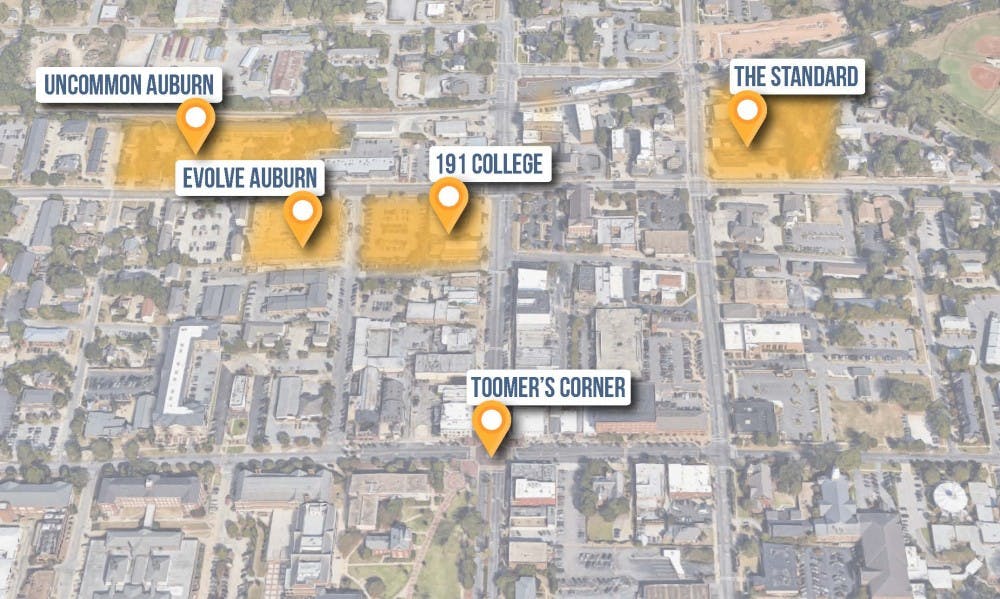With 30,400 students enrolled during the fall 2018 semester at Auburn University, and on-campus housing having only a capacity of 4,725 undergraduate students as presented in the 2018 Student Housing Analysis done by Danter and Associates, LLC., new off-campus student housing construction may have some rising concerns with sustainability.
“LEED, or Leadership in Energy and Environmental Design, is an independent building standard where building can be measured certified by a whole range of metrics about their sustainability performance,” said Office of Sustainability Director Mike Kensler. “Auburn University has committed itself to building only LEED-certified buildings, but I have not heard of any of these new buildings being built to LEED-certified standards.”
Newly constructed or planned apartment buildings include 191 College, The Standard, The Union, Twin Cities and Uncommon Auburn.
Depending on how these new buildings are constructed, Kensler said it would determine if they were more or less sustainable. What paint is being used for these buildings, how well insulated are their heating and air systems and what material is being used to create and decorate the buildings are all questions to factor in concerning sustainability, Kensler said.
New student housing development can lead itself to some environmental issues.
“I know that when development happens they have to take out trees, but the habit of just clear-cutting trees, even perhaps things that don’t need to be taken out, any tree we cut we are only adding to the problem of global warming,” Kensler said.
This developmental process of clearing trees is not just happening in Auburn but worldwide.
Kensler said that the world has lost so many forests, and there needs to be replanting of many trees.
The loss of trees has an impact on water quality and air quality, Kensler went on to say.
Sustainability is not just linked with the environment, however.
“I think many people equate sustainability with just being eco-friendly,” said Office of Sustainability intern Katy Duncan. “It really means you are sustaining a life in a healthy and beneficial way to you and everyone around both presently and in the future.”
Auburn University’s Office of Sustainability has the “Sustainability Compass,” which is a graphical representation of the different aspects of sustainability at each cardinal direction.
“North stands for nature, or living with accordance with nature,” Duncan said. “East is for economy, or making sure every person in the community has a right to a fair and equitable opportunity within your economy. South is for society, and West is for the well-being, or making sure that you are living in a way that you can sustain.”
With undergraduate enrollment increasing by 19.4 percent and graduate enrollment increasing by 10 percent, that leaves 25,715 students to search for alternative housing options.
“We go through cycles of society moving to and from cities, and right now we are in a upswing of people moving to cities,” said Duncan.
Cities are having to rapidly compensate for that.
The same thing is happening with Auburn.
Other housing options for Auburn students include, but are not limited to, 32 on-campus residence halls, 23 fraternity houses capable of housing 1,800 students, 19 sororities within the residence halls, apartments, duplexes and single-family homes as presented in the 2018 Student Housing Analysis done by Danter and Associates, LLC.
“I know many people in the city who are committed to sustainable management of watersheds for example, but it’s up to the city to decide what type of development will be allowed and where,” Kensler said.
Do you like this story? The Plainsman doesn't accept money from tuition or student fees, and we don't charge a subscription fee. But you can donate to support The Plainsman.





